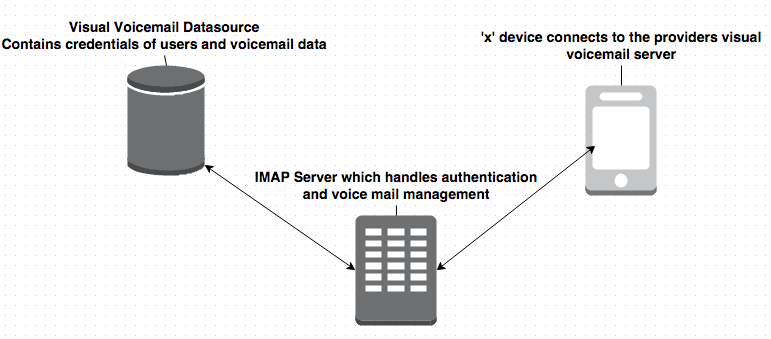Visual voicemail
Visual voicemail is random-access voicemail with a visual interface. Such an interface presents a list of messages for playback and may include a transcript of each message. In 2007, Apple's iPhone was the first cell phone promoting this feature. Since then, several companies in the telecommunications space have integrated a visual element into their voicemail services, as Samsung's Instinct and the BlackBerry Storm and Torch.
In 2007, YouMail was the first third-party, multi-platform visual voicemail service for mobile phones, storing voice mail in the cloud rather than the mobile carrier's network, and providing access to it through any web browser or by e-mail. In 2009, YouMail was the first to then extend this to also provide this functionality with an app for the BlackBerry, iPhone, and Android platforms, and an API that allowed others to build clients for Windows Phone 7 and WebOS.
There are two options for managing voicemail on your LTE Android Smartphone: AT&T Basic Voicemail or Visual Voicemail.
- Basic Voicemail: Basic voicemail is the standard voicemail answering service that is available on all AT&T wireless phones, and can be accessed even after setting up Visual Voicemail. Basic Voicemail allows you to dial into your voicemail box, and follow the voice prompts to listen to or manage voice messages. For additional information.
- Visual Voicemail: Visual Voicemail allows you to play and manage your voicemail messages from an on-screen inbox, just as you would with an email account. Visual Voicemail is offered for select 4G LTE Android smartphones either as a free downloadable app, or a built-in application.
Visual voicemail, like traditional voicemail, forwards your unanswered calls to a voicemail box. Unlike traditional voicemail, the voicemails are delivered to your phone over the data network as a sound file. Because it is stored as a file on your phone, you can listen to your voicemail at any time once it has been downloaded. You can select an individual message to listen to without having to listen to all of your other new messages first.
Visual Voicemail App Screenshots


Being able to access your voicemail visually without the need of all the extra prompts and annoyances striked great support and today visual voicemail exists in most carriers around the world. However the introduction of visual voicemail in itself created a whole new surface area which could be targeted to gain access to someones voicemail.
Under the hood, when visual voicemail is used, the visual voicemail client connects to an IMAP server in the background. The authentication process is done fairly seemlessly, and most of the times, no pin prompt is required.
Any voicemails ever left via the phone to you are then forwarded to the inbox of your personal email-like account and a two way relationship is formed. Actions made through visual voicemail are forwarded on to reflect changes on legacy voicemail servers.

Referance Link:
http://en.wikipedia.org/wiki/Visual_voicemail
https://support.solavei.com/en/mobile-service/visual-voicemail
http://www.att.com/devicehowto/index.jsp?id=stepbystep_KB419752&make=Samsung&model=GalaxyS5G900A
http://shubh.am/breaking-international-voicemail-security-via-vvm-exploitation/
No comments:
Post a Comment